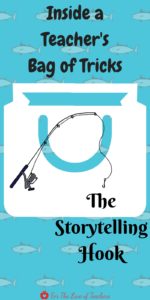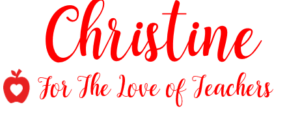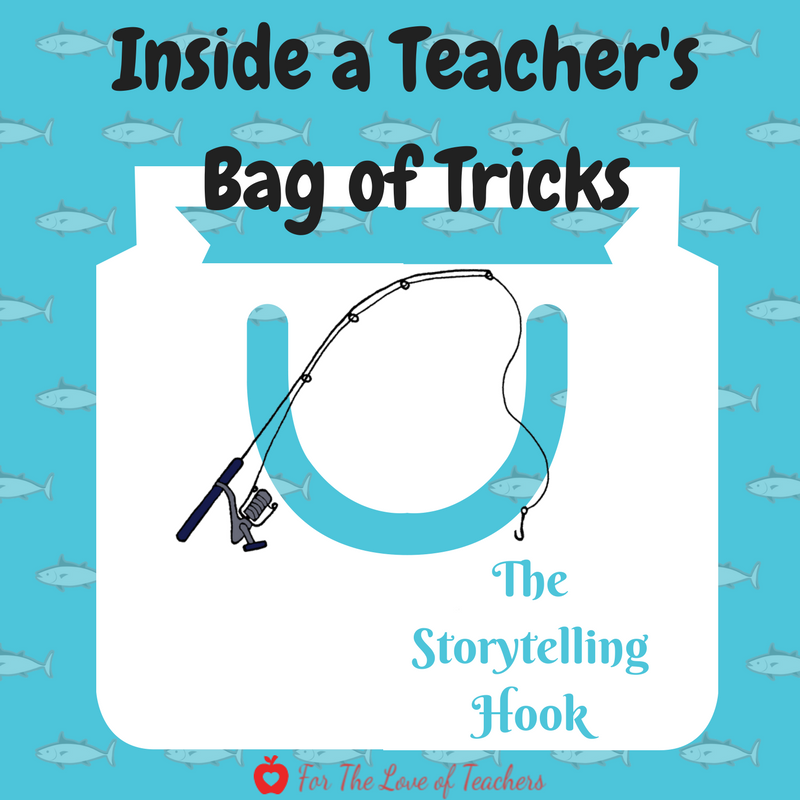Since I was in high school I had a knack for storytelling. My friends would always ask, “Got any stories to tell?” Usually the stories I would tell were about something unusual or funny that had happened. It must have been the way I told the story with detail, voice, humor and the facial expressions that just about said it all, were why my stories were so entertaining and left others expecting more. I soon became the storyteller in my circle of friends and learned that everyone loves a good story!
“Now I got a story to tell ya!” didn’t stop there. I brought my storytelling into my classroom and tied it into my teaching. I found that when relevant to the content storytelling is a powerful teaching strategy. Storytelling engages students. It gets their attention. A good beginning draws them in, middle details create interest leading to the punch of the ending. And everyone is waiting for that just right ending, the one that makes you laugh, cry, pleased or dissatisfied with how it all turned out in the end.
Sometimes I would tell my students stories just purely for entertainment. Like when I was absent because I stopped a string of “smash and grabs” at my son’s daycare which resulted in a police chase…true story! Or the time when my teacher school bag was stolen out of my car but then mysteriously turned up on the property of the previous house I had owned…another true story!
But my storytelling was most powerful when teaching writing. Makes sense, right? Storytelling in itself is obviously a story with a beginning, middle, end, plot, details, sequence, climax, characters, etc., spoken aloud in front of an audience. My audience was my students and since they were stuck with me for 7 hours each day, I used my stories to teach. Here’s how:
Adding Sensory Details to Create a Clear Picture
When launching our writing unit on personal narratives, I always model narrative writing with my own writing. Narrative writing is storytelling writing and this gives me the perfect opportunity to tell a story that will teach my students to add sensory details to create a clear picture for their readers. I do have an extensive library of personal narratives to tell but I always start with what became a student favorite titled, Thanksgiving Fiasco Part 1, a story about how I almost burnt my house down my first year hosting Thanksgiving. Now I’m not going to tell you the whole story but imagine some of these sensory details…thick, gray smoke, piercing sounds of smoke alarms, hacking coughs, heavy, foggy air, all while my family walked into the house. Can you visualize it a bit just from those details? Can you see the chaos? I tell the story in detail and with expression, and boy I could see how engaged they were, like they are watching a movie, my movie. That’s how powerful storytelling is when your students are actually visualizing each and every detail you say aloud. After storytelling, their eyes are wide, hands go up, thoughts, questions and comments are plentiful. And wait until I tell them that there is a part 2, (like you can even fathom the idea that this could possibly happen again but I kid you not), leaves them curious and hungry for more. Not only is this a meaningful and purposeful lesson in adding sensory details in creating that clear picture in their minds, but it serves as a model for students to write with rich, sensory details within their own stories. As an added bonus it helps build relationships with my students. They love hearing stories about their teacher. And not only will I never live this down by my family, but now I hear before every Thanksgiving break from my students, “This year try not to burn down the house, Mrs. Weis.” Ha, I’ll never promise that there wont be a part 3. 😉
Figuring Out Words in Context
I always encourage my students to use a wide variety of words in their writing and to use a variety of strategies to figure out words in context. One afternoon I decided to have a little fun with creating our own “nonsense” word that has a purposeful meaning in context after I had an encounter with a “mamajalama” bee. Yep, that’s my nonsense word…”mamajalama.” It all started with a story about being trapped in my garage with a unusually large fuzzy wuzzy bee the size a bit larger than a golf ball and literally buzzed like a chainsaw. While telling this story I use my made up word, “mamajalama” without ever directly stating what it meant, but used it so meaningfully in context that they were able to figure its meaning which was ‘great in size.’
Snippet: “Fear filled my body. I stayed low, as low as I possibly could out of this mamajalama bee’s path, as it darted over my head like a ping pong ball and it buzzed its mamajalama buzz as loud as a chainsaw, soaring from left to right, bouncing off each wall.”
After my storytelling mini lesson, the kids had a blast writing their own stories using one of their own made up “nonsense” words meaningfully in context. After writing, they practiced being storytellers and told their stories to their peers to see if they could guess the meaning of the word in context. Not only was it a success but it was fun, entertaining and purposeful, with a focus on how meaningful the words we use are, even nonsense ones.
Show, Don’t Tell
Writers often struggle with telling vs showing. Young writers tend to leave out details or provide a lack of details to tell the whole story. Storytelling could become a bit boring if it doesn’t have the details to that engage and create interest. This story for sure was one of my best to teach show, don’t tell, the one about the time I got lost in my friend’s neighborhood on Halloween night after parting from Trick or Treating. One wrong turn in an unfamiliar neighborhood turned out to be my very own Halloween fright.
Snippet: “My cold hands pushed the stroller through the dark shadows and thick piles of leaves, hoping that my next right turn would be the one that lead back to the house. I anxiously bit my bottom lip as “Elmo” continued his chant, “Daddy, Daddy, Daddy, I want Daddy!” “Ok, buddy, we’ll see Daddy soon,” I reassured him. But who was I kidding. I had no phone, had no idea where I was going and there was no one in this neighborhood that knew where Caluga Road was? ‘Is this for real,’ I thought. Just like Dorothy, I had a strange feeling that I wasn’t in Kansas anymore.”
Providing students with a wide variety of text examples is a good idea for teaching ‘show, don’t tell.’ Soon enough my students were working independently and with their peer writing coaches to write stories with imagery, dialogue, thoughts and rich details and description of settings and characters. We were on our way to writing like writers for sure. (Get my Writing Like Writers banner here.)
So you see by storytelling you are providing students with models of writing and teaching skills and strategies that make them better writers. Many of my favorite lessons are the ones that I created are based on my own personal experiences tying it into the content, curriculum and student interests.
“Whether to lead great armies, great nations, or great religions, they’ve used stories for one reason: they work,” (Burgess, Teach Like a Pirate, p. 118). Give it a try! Test drive your storytelling skills on your students and see if it works. I bet it will!
Happy storytelling from my classroom to yours!
Need support? Visit the Forums to ask questions, share ideas and products. There are so many fantastic ideas and products posted there so be sure to check them out. Be sure to visit the Shop for resources to support your classroom and join the email list for the latest posts, updates and freebies.
If you like it, then pin it!



Christine Weis is a passionate educator, classroom management coach, wife, and mom of two busy boys. She enjoys teaching, writing, and creating resources for teachers.





It amazes me that kids can verbally create amazing imaginative stories yet putting it in paper is difficult- maybe it’s a fear of criticism
It’s very common and developmentally appropriate. The process of writing is so elaborate, complicated and challenging. But the stories they tell will WOW you! Thanks for reading!
Christine at For The Love of Teacher
My husband is my biggest fan. He said he can’t wait for me to publish my first book. How can that be when I can’t get past my topic sentence?! Oh well, while the draft is still in the works, I am happy to come across articles like yours that not only share tips but motivation as well.
ME too! Aren’t we blessed with husbands who cheer us on and believe that we can and we WILL publish a book. I’m working on it too. Don’t feel bad because mine is still in the early stages of drafting. It will all come together one day! 😉 Thanks for reading!
Christine at For The Love of Teacher
That is so creative. I need to use some of your tips whenever I do storytelling with my kids. Thanks for sharing.
OH good! Thank you! I’m glad it’s helpful! Your kids will LOVE your stories! Thanks for reading!
Christine at For The Love of Teachers
I totally agree! I learn better when a relatable story it told
I agree! It really helps to make connections and engage with the storyteller. Thanks for reading!
Christine at For The Love of Teachers
This post really made me smile! I love how you model writing to students, how you ask guiding questions to help improve their writing, and most of all, how you hook your students in!
Thank you Kim! My students really love hearing stories and modeled writing. They need to see it and hear it to learn it. I’ve got them hooked!! Haha! Thanks for reading!
Christine at For The Love of Teachers
What great tips! I would have never thought of this!
Thanks so much! And thank you for reading! 🙂
Christine at For The Love of Teachers
These are some really wonderful ideas to improve the teaching-learning experience! And, I must compliment you on what an amazing storyteller you are 🙂
– http://www.allshethings.com
Thank you so much!!! I love storytelling…it truly engages my students. Thanks for reading! 🙂
Christine at For The Love of Teachers
I love your storytelling, Christine! What a wonderful way to incorporate your gift. I love all of these suggestions.
-Leah
Thank you Leah! I have fun with it and it surely engages my students. Thanks for reading!
Christine at For The Love of Teachers
My good friend is a teacher and I know she would love this blog, great post. I’ll definitely be sharing it!
Oh good…I’m glad! Thank you for sharing! I hope it helps other teachers. Thanks for reading!
Christine at For The Love of Teachers
I think this is great and I have such fond memories of my teachers telling stories. It’s a fantastic way of helping children remember things well. I teach methematics and I find that telling jokes helps my students remember some rules 🙂
These tips are golden!! I feel lat a loss some days trying to teach my son who is four at home! He is so energetic and has never been in a classroom environment before so I often have to really make the lessons exciting!
Thank you! 🙂 Teaching a four year old is NOT easy so making lessons exciting is key. I tell my son (very energetic and curious too) a lot of stories and he loves it. It completely engages him and provokes A LOT of questions. Give it a try! Thanks for reading!
Christine at For The Love of Teachers
These are so great! Such helpful and great tips for any storyteller. I always love reading a great story and I really appreciate these skills. They’re so important, especially for kids.
Thank you Christina!! I always appreciate your feedback! I love a good story too! 🙂
Christine at For The Love of Teachers
You ARE a good story-teller! These snippets were awesome! …and I can’t believe you have a part TWO for the Thanksgiving fiasco!
My favorite take-away from this post is the “nonsense word” strategy! Love this! My first graders would love to make up their own words! I can’t wait to incorporate this into our next lesson on Word Choice!
Thank you for sharing your stories along with some great writing ideas!
Thank you Lori!!! I love a good story and I love telling stories. Oh Part 2 of The Thanksgiving Fiasco will blow your mind…LOL. And I thought I’d never live the first part down. My students LOVE my stories. I’m so glad you will use the “nonsense” word strategy. That is such a fun lesson and could be used across grade levels. Let me know how it goes. I’d love to hear the words your firsties come up with. Thanks for reading and for always leaving such a thoughtful comment. You are the BEST!!!
Christine at For The Love of Teachers
Great strategies and many I can use myself; I plan to get into writing mode with a little bit more seriousness this year..
Perfect! I’m glad some of these strategies could help you move forward with your writing goals. Thanks for reading!! 🙂
Christine at For The Love of Teachers